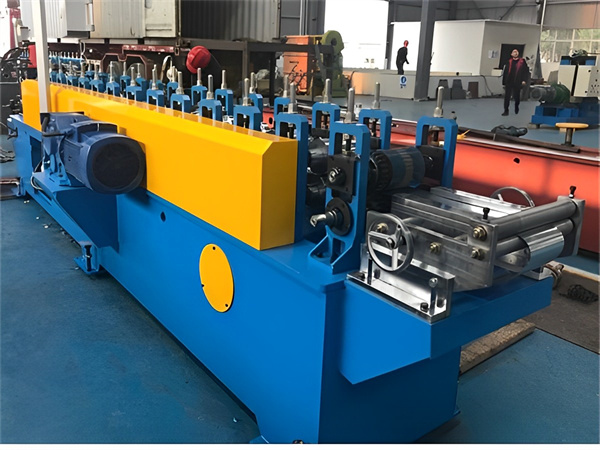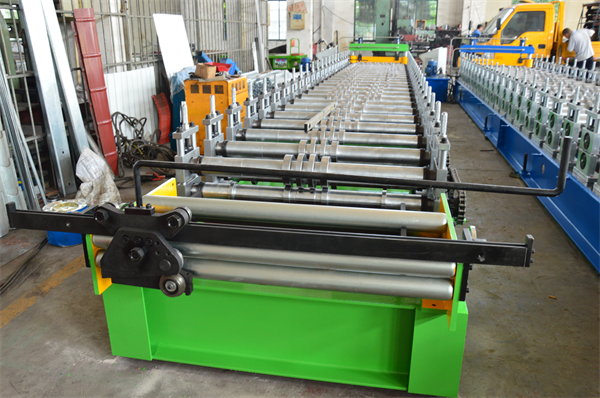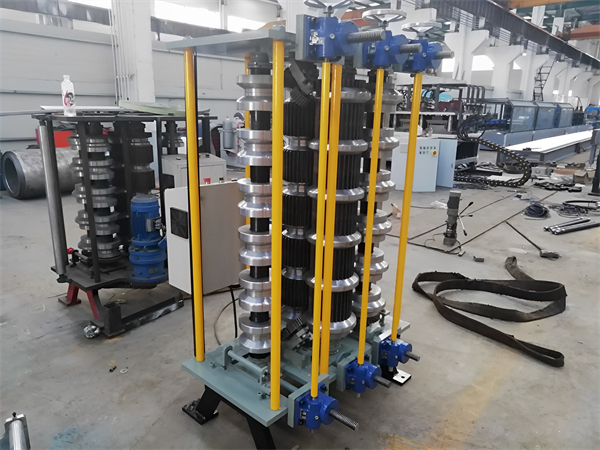Roll forming is an efficient, cost-effective way to manufacture metal door panels for vehicles and buildings. A door panel roll forming machine utilizes a series of rollers to continuously bend and shape a flat metal sheet into a complex 3D profile. Compared to other manufacturing processes like stamping or fabrication, roll forming is ideal for producing lightweight, high-strength door panels in long lengths with excellent dimensional accuracy and repeatability.
In this comprehensive guide, we’ll explore how manufacturers use roll forming machines specifically for door panel production, the key benefits over other processes, main components and working principles, and considerations for setting up door panel roll forming production lines.

Overview of Roll Formed Metal Door Panels
Roll formed door panels have many advantages that make them a popular choice for fabricating lightweight, durable doors for vehicles, commercial buildings, residential homes and more.
Benefits of Roll Formed Door Panels
Here are some of the main benefits that make roll forming ideal for door panel manufacturing:
- Lightweight – Roll formed steel and aluminum door panels can be made thinner and lighter than stamped panels, while retaining strength and rigidity. This helps reduce weight in vehicles for better fuel efficiency.
- High strength – The continuous bending in roll forming work hardens and strengthens the metal giving door panels increased load bearing capacity.
- Flexibility – Roll form lines can easily be changed to produce new profiles by changing roll dies. This allows faster product development and customization.
- क्षमता – Roll forming has very high material usage and produces minimal scrap losses, significantly lowering costs. The process is also fast with production rates over 100ft/min.
- गाढ़ापन – Roll formed parts have excellent consistency and dimensional accuracy, essential for proper door fit and function.
- Quiet operation – Roll formed door panels have a smooth, quiet surface compared to stamped panels, improving noise control.
- Decorative finishes – Pre-painting metal coil before roll forming allows various color finishes. Other coatings like vinyl films can also be applied for decorative door skins.
These benefits make roll formed door panels popular across many industries from automotive to construction. The continuous production and ease of customization provide economies of scale for mass manufacturing uniform door panels.
Key Components of a Door Panel Roll Forming Line
A complete door panel roll forming line is comprised of several key components that work together to transform flat sheet metal coil into formed panels:
Coil Handling Equipment
- डेकोइलर – Feeds flat coils of sheet metal into the roll line. Contains powered unwinding mechanisms to smoothly payoff coil.
- Feed table – Supports and guides coil into forming section, often with powered drives.
- Straightener – Removes coil curvature and flattens sheet before forming. Contains aligned rollers that reverse-bend the sheet.
Roll Forming Stations
- Forming rolls – Special machined rolls that progressively bend sheet metal through a series of stands. Hundreds of stands can be used for complex profiles.
- Roll housings – Contain bearings, shafts, and support frames to mount forming rolls. Adjustable for precision forming.
- Drive units – Provide synchronized turning motion for all rolling stations. Typically use gearbox driven shafts.
Post-Forming Equipment
- Cutoff press – Shears formed panel strips to required lengths for individual doors. Often pneumatic, hydraulic or servo powered.
- Runout table – Supports cut panels and allows safe, organized offloading. Length determines production cycle times.
- Stacking – For automated stacking of panels into bundles for easier handling. Uses robotic pick and place mechanisms.
Proper engineering design of each component is crucial for achieving the high production rates, quality standards and operation efficiency needed for door panel manufacturing. Advanced 3D modeling ensures optimal roll design before manufacturing tooling.
How Door Panel Roll Forming Machines Work
Door panel roll forming utilizes a continuous, step-by-step process to shape flat sheet metal into fully formed profiles. Understanding the stages helps explain how the components function together:
1. Sheet Feeding
Coiled sheet metal is first fed into the roll former by the powered decoiler and guide tables. The decoiler smoothly unwinds the coil while feed tables provide support and straight alignment into the forming section.
2. Sheet Straightening
Next, the sheet metal passes through a straightening machine. This uses a series of rolls, positioned top and bottom, that make small reverse bends to remove any coil curvature from the incoming sheet. The sheet must be flat pre-forming for uniform processing.
3. Progressive Roll Forming
In the main forming section, the sheet is progressively shaped by passing through consecutive rolling stations. Each set of upper and lower rolls makes a small incremental bend, typically a few degrees. Hundreds of rolling stations, each with uniquely machined rolls, continuously form the sheet into the final door panel profile.
4. Final Forming
The last sets of rolls perform finishing processes like edge hemming and forming mounting flanges. This completes the door panel profile ready for downstream processes.
5. Cutoff
Formed panels proceed into the cutoff press which shears the continuous panel strip into individual door lengths at high speed. The cutoff cycle is synchronized with upstream feeding for continuous production.
6. Unloading
Sheared door panels are placed onto the exit runout tables and are either manually stacked or automatically bundled by robots. The finished panels are then moved to the next stage of manufacturing or shipping.
The roll forming process then continuously repeats to rapidly produce very high volumes of formed door panels. All components work in sequence to transform raw flat sheets into fully profiled blanks.
Configuring Roll Forming Lines for Door Panels
To produce quality door panels efficiently requires proper configuration and capabilities for the entire roll forming line:
Panel Width Capacity
Roll forming mills must be sized for adequate door panel widths. Typical ranges are 600-2100mm for vehicle doors and up to 3000mm for large architectural panels. Wider machines require more floorspace but minimize need for multiple lines.
Thickness Capabilities
Door panels vary from thin vehicle inner panels around 0.5mm to thick architectural panels at 2mm and above. Roll tooling must support the needed thicknesses and avoid deformation.
Roll Tooling Design
The roll dies that form each profile are machined to precise shapes. Advanced software optimizes the complex 3D geometry to avoid defects. Tooling costs increase for more complex profiles.
Roll Housing Adjustability
Housings allow incremental repositioning of rolls for precision adjustment during setups. This helps achieve tight tolerances across long part lengths.
Roll Speed Range
For optimal efficiency, lines must support needed production speeds – up to 100ft/min for vehicle panels. Speed is balanced against tooling limits and profile complexity.
Quick Die Changeover
Minimizing setup time enables faster changeovers between panel profiles. Tooling carts, quick-clamping, and automated roll change all help reduce changeover downtime.
Properly engineered roll forming lines, customized for door panel production, results in maximum throughput, quality and reliability.
Door Panel Roll Forming Process Considerations
Several factors must be evaluated when developing roll formed door panel manufacturing processes:
Component Integration
Roll forming lines require proper integration of the coil handling equipment, forming sections, post-forming processes, and automation. Misaligned components cause defects.
Lubrication Needs
Lubricants reduce friction between sheet and tooling to avoid scratching, facilitate bending, and extend tool life. Water-based or oil-based lubricants are applied before forming.
Strip Tension Control
Controlling strip tension throughout the process is critical to avoid stretching, necking and thin spots in panels. Dancer arms or tension levelers actively manage tension.
Profile Stress Analysis
Engineering analysis optimizes the forming sequence to minimize unnecessary stresses. This avoids damage to the crystal structure of the metal during forming.
Secondary Operations
Often door panels require notching, piercing, hemming, or hardware attachments after initial forming. Integrating stations for these secondary operations inline improves quality and productivity.
Careful process design and trials ensure door panel roll forming lines achieve the designed production rates and capabilities for door manufacturing.
Architectural Door Panels vs Automotive Door Panels
While roll forming is used for both automotive and architectural door panels, there are several key differences:
Automotive Door Panels
- Tighter dimensional tolerances – within ±0.5mm
- Complex double layer forming with bends in multiple planes
- Integration of inner panel stiffeners and braces
- Thinner and lighter materials – 0.5mm to 1mm steel and aluminum
- High volume production – over 500,000 panels annually
- Tighter profile bend radii – as small as 1mm
- Maximum width around 1,300mm
- More automation for panel stacking
Architectural Door Panels
- Moderate tolerances around ±1mm
- Simpler single plane bends
- Thicker metals – 1mm to 2mm+ steel
- Lower volumes – 10,000 to 50,000 annually
- Larger bend radii – typically over 5mm
- Wider widths from 1,500mm to 3,000mm
- More manual offloading and stacking
These differences influence the line layout, tooling design, and process parameters when setting up door panel production for each industry.

Roll Tooling Design for Optimal Door Panels
One of the most critical factors in achieving consistent, high quality door panels is advanced tooling design. This includes:
CAD Modeling
Creating 3D CAD models of the panels allows visualization and precision engineering of the roll forming tooling. This avoids interference and optimizes geometry.
Bend Sequence
Determining the optimal forming sequence minimizes unnecessary stresses in the material. Step-by-step analysis achieves the designed profile.
Roll Contouring
Smooth roll contours, matched upper and lower, ensure gradual bending without deformation. This also increases tool life.
Roller Compensation
Strategic overbending by using oversized rolls compensates for elastic recovery during forming to improve accuracy.
Roller Materials
Durable tooling materials like carbide and pre-hardened alloys resist wear while enduring high volumes. Coatings can further improve longevity and surface finish.
Investing in skilled roll design engineering and machining quality results in door panel tooling that produces consistent parts through millions of cycles.
Typical Defects in Roll Formed Door Panels
While a properly engineered roll forming process produces very consistent door panels, any mismatches in capabilities versus tooling can lead to quality defects. Common issues include:
Bowing
A curved panel profile indicates uneven longitudinal bending. This is typically caused by worn roll tooling or roller misalignment.
Twisting
Door panels twisting along their length or width means asymmetric forming. Loose roll housing bearings are often the cause.
Thinning
Reduced material thickness results from over-stretching during bending. Lowering strip tension can improve this.
Splitting
Long cracks or splits in the panel profile occur when bending exceeds material ductility. Adjusting the tooling design is needed.
Surface marks
Roller imprints, scratches and gouges on the door facing point to contaminated, damaged or mismatched tooling.
Profile error
Incorrect roll contours will create sections with unintended bends or distortion. Updated tooling is required to match the design.
Ongoing quality checks ensure any defects are quickly identified and inspected against the defined forming parameters to isolate the root cause. Adjustments are then made before major quality losses occur.
Safety Considerations for Door Panel Roll Forming
Working safely is a priority when operating heavy machinery like roll forming lines. Key measures include:
- Installing full guarding around rotating shafts and rolls
- Interlocked safety doors that automatically stop operation when opened
- Emergency stop buttons for quick shutdown
- Roll housing locks to prevent dangerous motion during maintenance
- Warning lights indicate machine status
- Reducing noise levels with sound enclosures
- Following lockout procedures before maintenance and roll changes
- Providing technicians proper PPE like eye protection
- Maintaining adequate workspace clearance around equipment
With proper safeguards and training in place, operators can work efficiently while avoiding hazards when producing door panels. Real-time monitoring and automated shutdowns provide additional protection.

निष्कर्ष
Roll forming provides an ideal method for producing high volumes of lightweight, durable door panels for vehicles and buildings. When leveraging advanced forming designs, precision tooling, and properly configured production lines, manufacturers can rapidly fabricate roll formed door panels with tight tolerances and consistent quality.
Continued innovation in roll forming offers even more benefits for door panel manufacturing. For example, 3D adjustment mechanisms allow easier changeovers between panel configurations to enable mass customization. Integrating secondary operations like notching and hardware insertion also streamlines production.
To maximize line efficiency and minimize costs, it’s important to work closely with an experienced roll forming machine partner during planning and implementation. By evaluating key factors like annual volumes, quality needs, available space, and product mix, manufacturers can define the optimal line capabilities and layout for their door panel production needs.
सामान्य प्रश्न
Here are answers to some frequently asked questions about roll forming production of door panels:
What materials can be roll formed into door panels?
Roll forming is highly effective at forming steel, stainless steel, and aluminum into door panels. With the right tooling design, roll forming can form panel gauges from 0.5mm to 4mm+.
How many rolls are needed in the forming section?
A typical door panel profile requires between 50 to 150 individual roll sets for the complete forming sequence. More complex profiles need more roll stations.
How long does it take to changeover between panel profiles?
With quick-change assembly and cart-based tooling, profile changeovers can be performed in 30-90 minutes. This enables economical short production runs.
What secondary processes can be integrated into the line?
Typical downstream processing includes notching, piercing, hemming, corner finishing, and hardware attachments like hinge and lock mounting.
How are finished panels removed from the line?
For automation, robotic pick-and-place systems efficiently load panels from the runout table to bundled stacks. Many lines also allow for manual offloading.
What production rates can roll forming achieve?
Roll forming lines can easily achieve 75-150ft/min for typical vehicle door panels. Rates up to 250ft/min are possible with high-speed tooling and drive designs.
What factors affect the line speed?
Forming speed depends on tooling limits, material type, profile complexity, strip thickness, and overall line length. Higher speeds also require more motor power.
How are panels packaged for shipping?
After stacking and banding, door panels are usually loaded vertically onto pallets or in crates to maximize transport. Protection against scratching is important.
